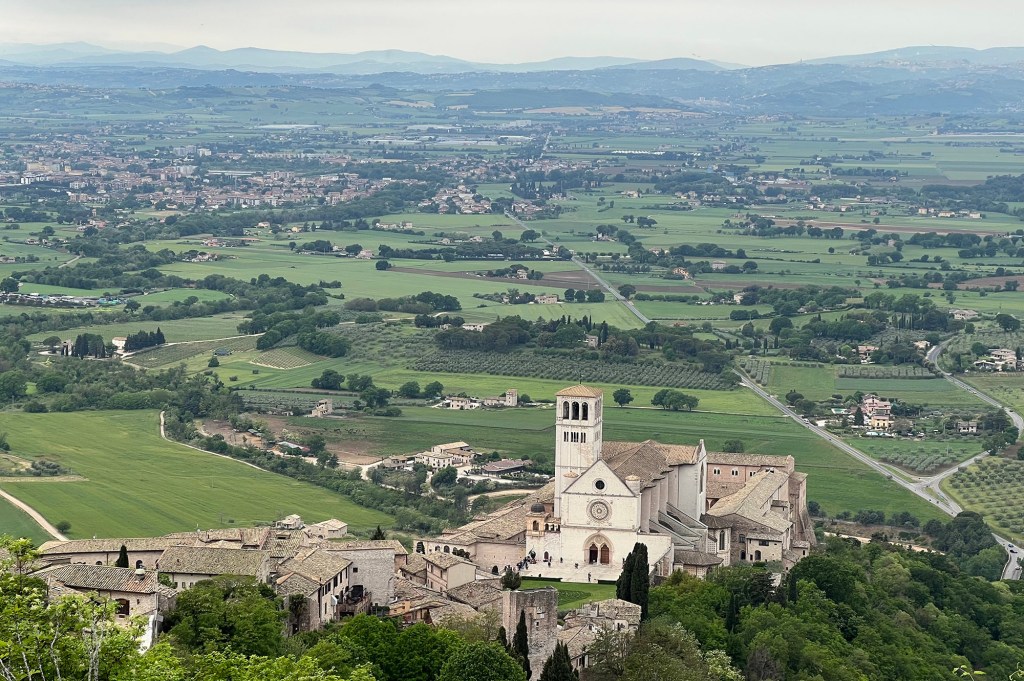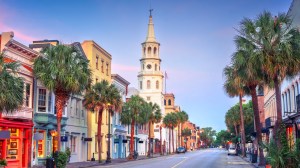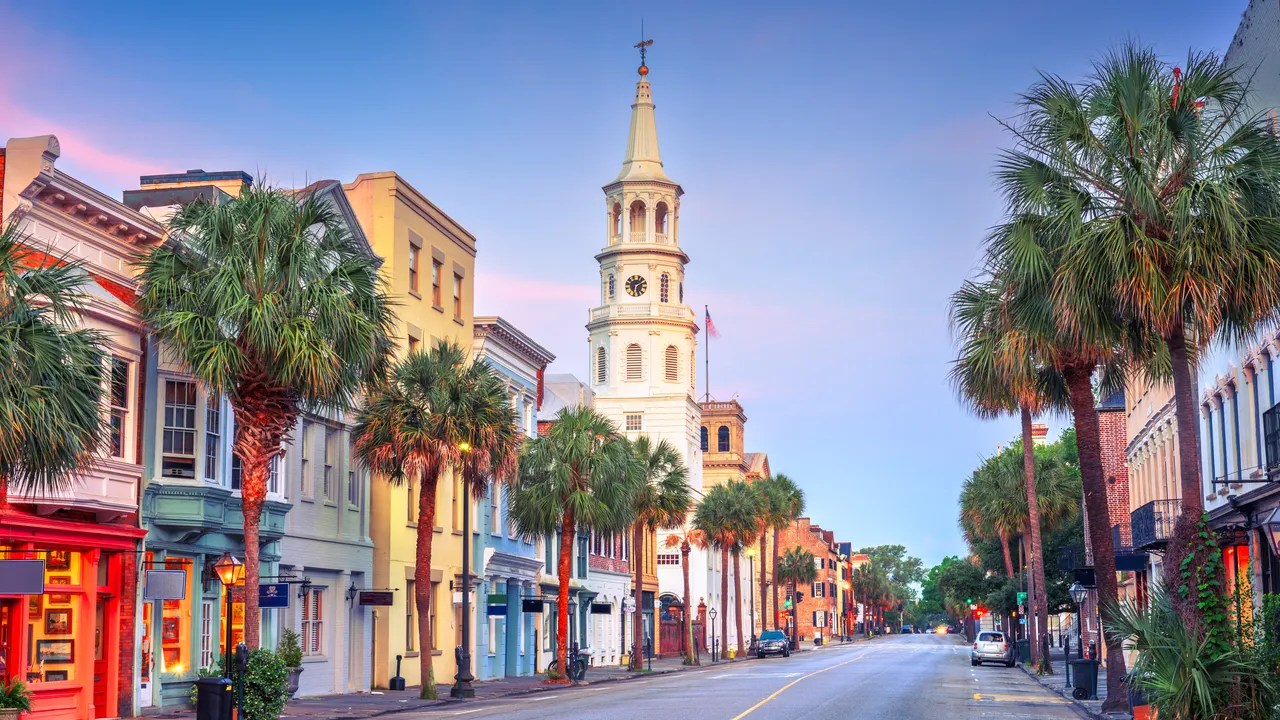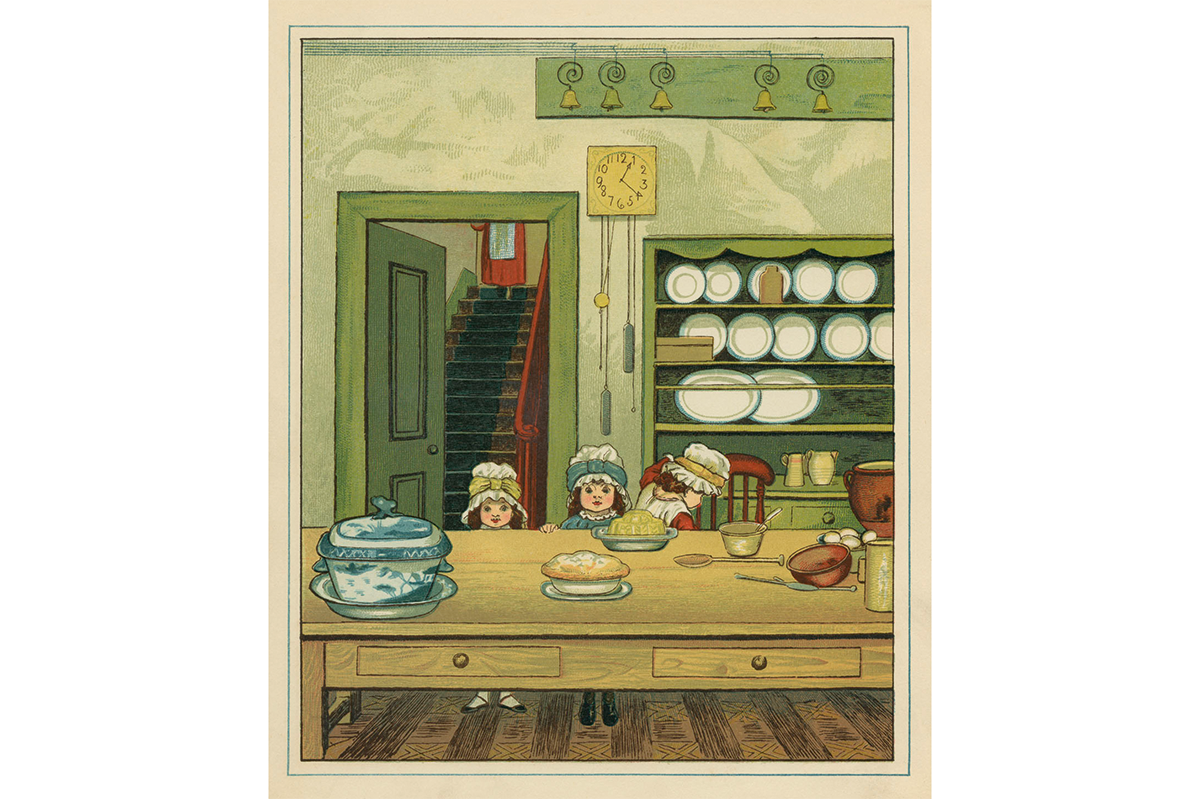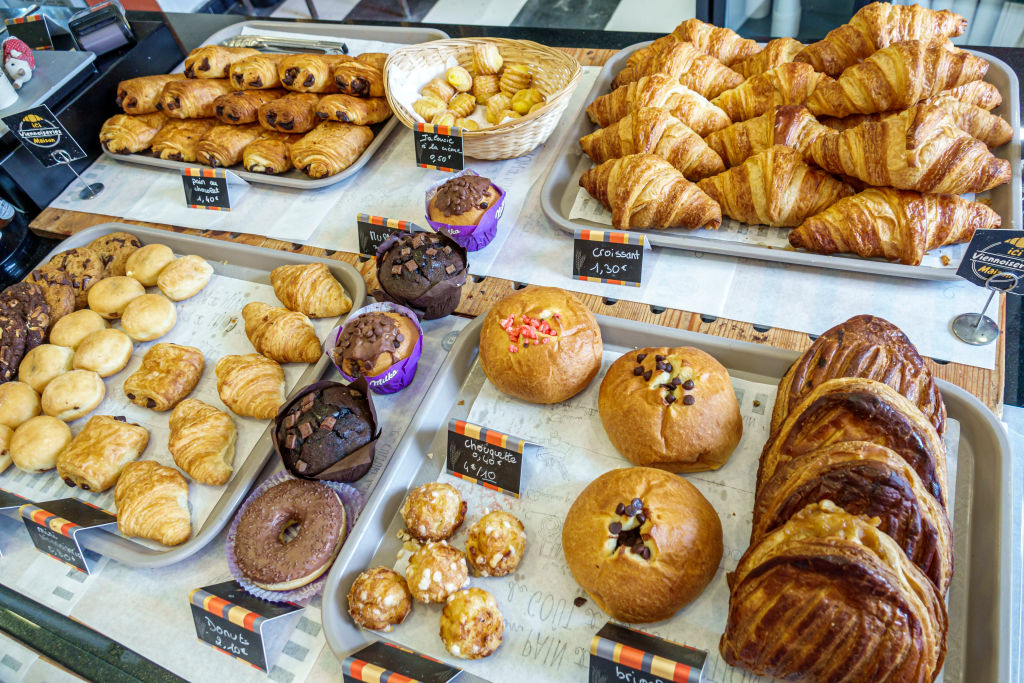Nestled in the Apennine Mountains due east of Rome is the region of Umbria, a hidden gem at the heart of Italy. It’s characterized by lush green countryside, rolling hills carpeted in olive groves and picturesque medieval hilltop towns. The region has the beauty of Tuscany but without the mobs of tourists. Its food is the best Italy has to offer — fresh, traditional, high-quality and spectacularly tasty. The senses, then, are satisfied — but Umbria also harbors a rich religious legacy. Home to some of Catholicism’s most titanic saints — Francis and Clare of Assisi and Benedict of Nursia — and dotted with ancient and medieval churches of great beauty, it’s as much a pilgrim’s paradise as it is a tourist’s Italian dream.
Umbria benefits — ironically — from being what one local called the “poor cousin of Tuscany.” And sure, the region is neither as wealthy nor does it have the same name recognition as its westerly neighbor, but it has everything that Tuscany has to offer and more. Tuscany, though fully deserving of its accolades, is brimming with tourists, which makes enjoying its quaint towns and most famous city (Florence) a bit difficult. Umbria, lacking the flood of travelers, has no such impediment. Its largest city Perugia is busy, but by no means crowded, and its towns have more locals and school field trips than international visitors. In some of the smaller towns, you feel more like a local than an outsider. That may change a bit if you visit in peak tourist season, but it will still be far more manageable than Tuscany.
Small towns — many first founded by the Etruscans and Romans — are sprinkled on the region’s plentiful hills and mountainsides, their historic hearts mostly untouched by the modern world. Be prepared for a hike — you will not find any flat ground — but it is well worth it. Quiet, meandering, cobbled streets flanked by medieval stone homes, broken up by sunny piazzas and pleasant gurgling fountains transport you back to a time before the hectic hubbub of modernity. Don’t get too distracted, though; residents have a knack for whipping around corners in their little Fiat 500s. Every hour (and at certain times every fifteen minutes), the bells toll from the town’s main church, a welcome sound for those longing to escape the rabid secularism afflicting parts of the US.
Settlements of particular charm are Todi, Spello and Montone. Todi, located in the southwestern quadrant of Umbria, is on the larger side of the three, but is no less quaint. The town is home to two large churches, Todi Cathedral and the church of St. Fortunato, in addition to some smaller parishes. Todi Cathedral sits at the north end of the main square, the Piazza del Popolo, which is also home to the Prior’s Palace (now city offices and a museum). Its central portal is abundantly decorated, and its large wooden doors feature ten carved reliefs of saintly figures. The church of St. Fortunato is magnificent, even if most of its frescoes have long since disappeared. Its bell tower, which is open to the public, provides stunning panoramic views of the surrounding town and countryside. Like every town in Umbria, the pigeons and swallows are ever-present.
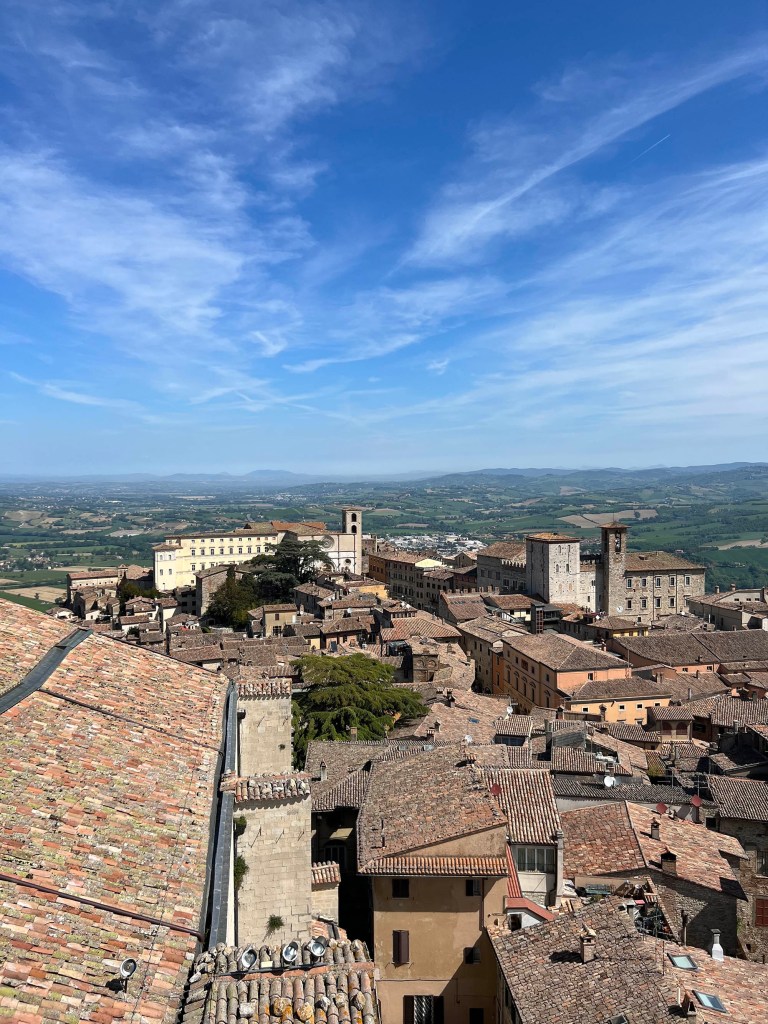
Spello is located in the eastern portion of the region, overlooking the same valley as Assisi, which is a short drive to the north. Like its northern neighbor, its buildings are constructed with pink limestone from the hills around Assisi and white limestone, the alternation of which never fail to draw the eye. It is almost magical, as if each edifice is made of candy. The town is also known for its flowers, which adorn nearly every house and are the subject of a yearly festival. Locals proudly display the ceramic plaques detailing their placement in the competition, with some particularly skilled floral designers having eight to ten hanging outside their doorway for passersby to see.
If Umbria is the hidden gem of Italy, Montone is the hidden gem of Umbria. A (very) tiny town perched atop a hill in the region’s northwest — far from any other destination and surrounded by lush mountains — the tourist is a rare sight. The main square has only a few businesses including a small café, in which five or six older local men were playing cards when I visited (what could be more “quaint Italian town” than that?). The town’s streets (which were immaculate) were nearly deserted, but the locals who were walking around were as friendly, warm and welcoming as you could ask for.
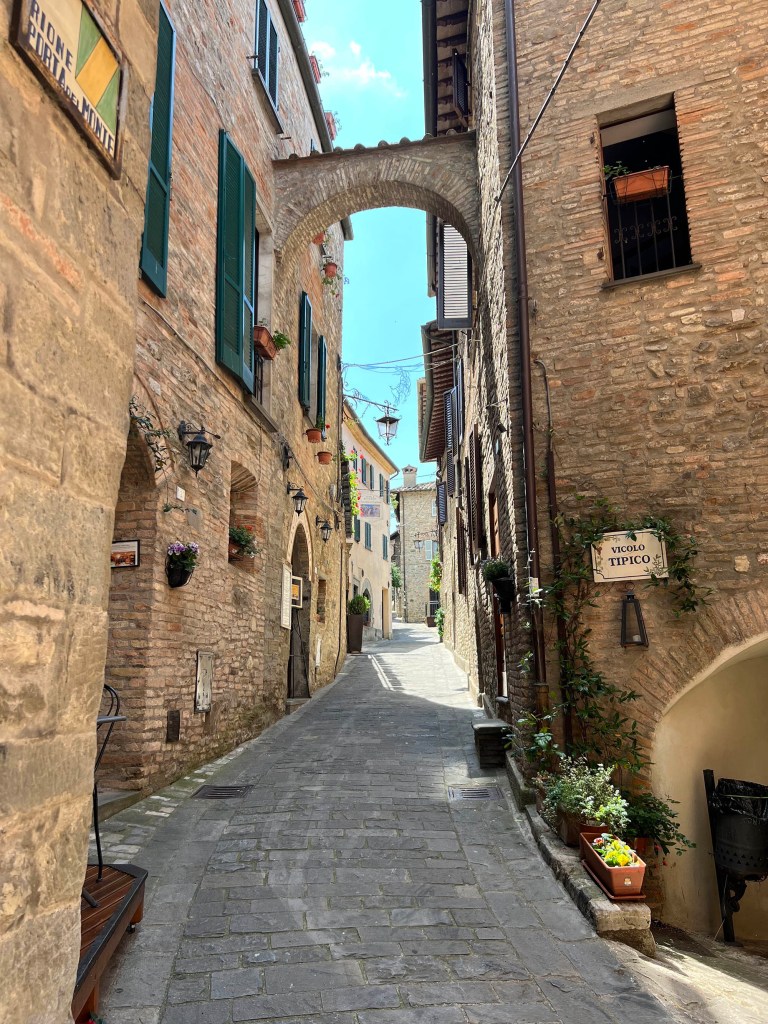
When the breeze blows down an Umbrian town’s winding roads, it brings with it the scent of some of Italy’s finest cuisine. With readily available local produce and meats (most famous being its pork dishes, such as porchetta), the food is extremely fresh and authentic —the kind of Italian cookery that Americans long for. Nothing ever sinks to the bottom of your stomach, and you finish full but not sick. Even better, it is shockingly inexpensive. A twelve-inch pizza could cost only $6, and a similarly sized plate of focaccia only $4. The meals, however, are of gourmet quality.
One small restaurant in Todi, Le Scalette, deserves particular praise. Warm, friendly staff and a gorgeous view of the town and valley make it a wonderful place to relax and enjoy the best Umbrian eats. Their margherita pizza is superb, with fresh tomato sauce topped with delicious buffalo mozzarella and crunchy, thin crust, it ranks among the best I have had. Their tortelloni, with house-made pasta and stuffed with creamy ricotta cheese melts in your mouth. And the tiramisu is in a class of its own. Served in a cup with a couple of lady fingers and a smooth, pudding-like custard with a dusting of rich cocoa, it is the perfect dish to cap an incredible meal.
Aside from beauty and food, Umbria is also a top destination for Christian pilgrims. Most prominent among the religious sites in the region is Assisi, the town from which St. Francis and St. Clare hailed and where their shrines are located. The Basilica of St. Francis, where the saint is buried, is covered with stunning medieval frescoes that cannot fail to transport the beholder closer to the divine. A steady stream of pilgrims makes their way to the crypt and around the richly decorated church. On the other side of town is the Basilica of St. Clare, which is home to St. Clare’s body, but also the shrine of the first millennial saint, Carlo Acutis, whose life is a model of humility and devotion to God in the midst of a secular world. The Eremo delle Carceri, one of the hermitages that St. Francis visited, is on a hillside just outside the town. It is easy to see why the location was chosen, as one can more viscerally feel the presence of God in the silent natural beauty that surrounds the complex. The sun finds its way through the canopy, creating flowing beams of light on the forest floor as the wind blows, and the shallow caves are the perfect place to find the quiet solitude so helpful in discerning God’s voice.
Though it may not be the first place in Italy that American tourists think to visit, Umbria deserves to be at the top of the list. Whether you are going to Italy as a pilgrim, to enjoy the food, or to experience the charming medieval towns and villages, there are few better places to go than the “poor cousin of Tuscany.”



